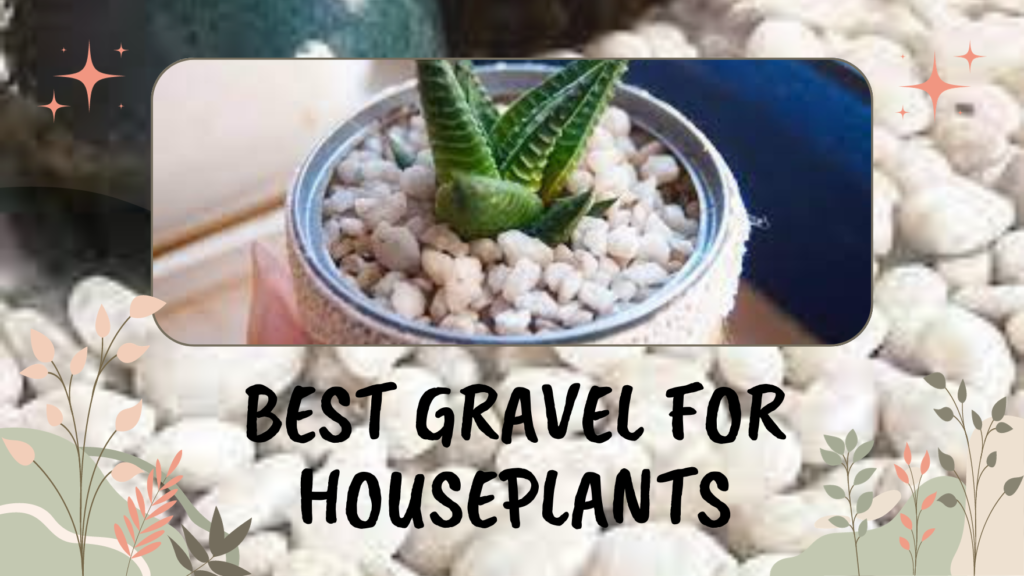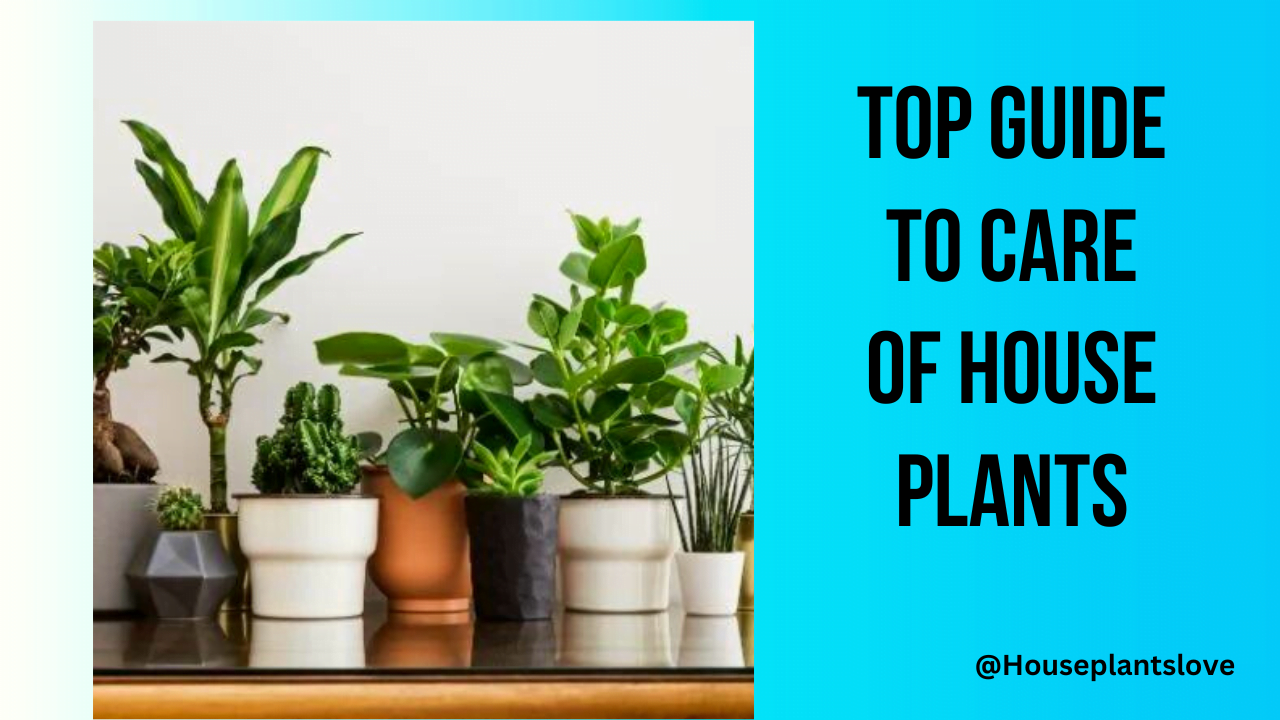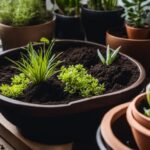Choose the Ideal Gravel for Houseplants, Houseplant Gravel Types, and Benefits
When it comes to nurturing healthy and thriving houseplants, the type of gravel you use can make a significant difference. Gravel serves various purposes in houseplant care, from enhancing aesthetics to improving drainage and deterring pests. Gravel can be a great addition to your houseplants. But with so many different types of gravel available, it can be tough to know which one is best for your plants. In this comprehensive guide, we’ll explore the best gravel options for houseplants, their different types, and how to use them effectively.

Choosing What Is The Best Gravel For Houseplants?
The best gravel for houseplants is aquarium gravel or pea gravel. However, nearly any type of gravel can be suitable as long as it meets specific criteria: it should be the correct size, clean, and visually appealing. Aquarium gravel is especially advantageous because it comes pre-rinsed, eliminating the need for prior cleaning.
Understanding Houseplant Gravel Types
Houseplant gravel can be categorized into different types, each with its own characteristics. Let’s explore some of these options and determine their suitability for houseplants:
1. Aquarium Gravel
- Suitable for houseplants: Yes
- This type of gravel is smooth and rounded, making it easy on plant roots. It also has good drainage and aeration properties.
- Aquarium gravel is readily available at aquatic stores or online. It’s ideal for covering the soil surface or potting plants in gravel.
- This gravel type is already clean and washed, eliminating the need for additional sterilization or dust removal.
2. Pea Gravel
- Suitable for houseplants: Yes
- This type of gravel is slightly larger than aquarium gravel, but it still has good drainage and aeration properties. Pea gravel is also a good choice for top-dressing houseplants.
- Pea gravel is a standard choice for houseplants. However, it’s recommended to wash it before use to remove any dust.
- Easily accessible from garden centers or nurseries, pea gravel adds an attractive touch to plant containers.
3. Pebbles
- Suitable for houseplants: No
- Pebbles can be used for drainage, aeration, or top-dressing. Choose pebbles that are smooth and rounded to avoid damaging plant roots.
- While decorative pebbles can enhance the soil’s appearance, they may hinder effective watering due to their larger size.
- Large pebbles do not provide adequate support for plant growth and are not ideal for potting.
4. Crushed Granite
- Suitable for houseplants: Yes
- Crushed granite is a good choice for drainage and aeration, but it can also change the pH of your soil. Be sure to test your soil pH before using crushed granite.
- Crushed granite can be used to cover the top of plant pots or mixed with soil to support plant growth.
- Washing it before use is advisable, particularly for container applications.
5. Lava rock
Lava rock is another good choice for houseplants. It is lightweight and porous, and it also has some water-retaining properties.
6. Perlite
Perlite is a lightweight, volcanic rock that is often used in potting mix. It is a good choice for houseplants because it is very porous and well-draining.
7. Vermiculite
Vermiculite is another lightweight, volcanic rock that is often used in potting mix. It is similar to perlite, but it has slightly better water-retaining properties.
Is Gravel Beneficial for Houseplants?
Yes, gravel can offer several benefits for houseplants depending on its usage. Gravel can be a good addition to houseplants, providing drainage, aeration, and visual appeal. However, it is important to use gravel correctly.
- Enhances the aesthetics of plant containers.
- Prevents fungus gnats from accessing soil, disrupting their life cycle.
- Aids plants requiring excellent drainage.
- Helps trap moisture in the soil.
Do All Houseplants Need Gravel?
Not every houseplant requires gravel, and its use should be tailored to the plant’s specific needs. Research the plant’s requirements before adding gravel to its container, as some plants prefer consistent moisture and may not benefit from gravel mixed into their soil.
Some plants, such as orchids, prefer to be grown in bark or other epiphytic media. Other plants, such as succulents and cacti, prefer to be grown in gritty soil with good drainage.
If you are unsure whether or not your houseplant needs gravel, it is best to side of caution and not use it
Can You Put Gravel On Top Of Houseplants?
Placing a layer of gravel on top of the soil in a houseplant’s container can be advantageous. This practice serves multiple purposes, including:
- Preventing fungus gnats from breeding in the soil.
- Trapping moisture within the pot reduces the frequency of watering.
- Ensuring a tidy appearance for the plant container.
However, it’s essential to avoid overwatering when using gravel on the soil surface to prevent root rot.
How to Use Gravel for Houseplants
To effectively utilize gravel for houseplants:
- Mix it into the soil to improve drainage, especially for plants that require excellent drainage.
- Adjust the gravel-to-soil ratio based on the plant’s moisture needs.
- Alternatively, apply a thick layer of gravel on the soil surface to deter fungus gnats and maintain a neat appearance.
Here are some additional tips for using gravel for houseplants:
- Rinse the gravel before using it. This will help to remove any dirt or dust that may be on the gravel.
- Use a layer of gravel that is at least 2 inches deep. This will ensure that the gravel will provide adequate drainage.
- Be careful not to overwater your plants. When watering, allow the water to drain completely out of the pot before putting it back in its saucer.
Houseplants That Can Thrive in Gravel Alone
While most houseplants require additional nutrients, some can survive in gravel alone. Some Indoor houseplants grow in water with Gravel
- Lucky bamboo
- African Violet
- Coleus
- Philodendron
- Orchids
- Tillandsia
- Paperwhites
- Spider plants
- Cacti (with added vermiculite or soil)
Does Gravel Change The pH Of Soil?
The type of gravel used can impact soil pH. Limestone gravel can raise pH levels, while volcanic gravel may lower them. Consider the gravel’s composition when selecting it for your plants.
In conclusion, choose aquarium gravel or pea gravel for your houseplants to promote effective drainage and enhance container aesthetics. Avoid using gravel as a bottom layer in plant pots, as it can lead to drainage issues and root rot. Tailor your gravel usage to the specific needs of your houseplants, and enjoy the benefits it brings to your indoor greenery.




